Hyundai Ioniq 5 AWD review
Hyundai is arguably more advanced with electrified motoring than any other brand in the country. It’s the only one to currently offer a hybrid, plug-in hybrid, battery electric vehicle and a fuel cell EV.
And that was before the arrival of the Ioniq 5, the company’s most significant newcomer.
The Ioniq 5 is a big deal because it’s the first Hyundai designed on the new electric-only E-GMP architecture. Whereas other Hyundai EVs – regular Ioniq, Kona Electric and Nexo FCEV – have been adapted within the architecture of a regular petrol-powered car, the Ioniq 5 started from a clean sheet.
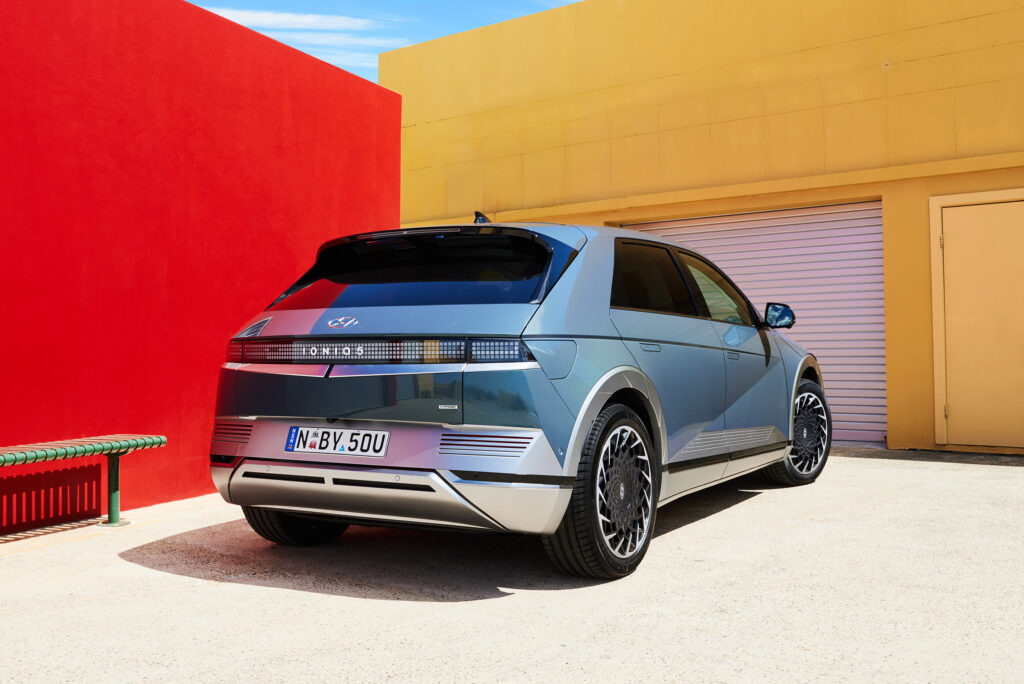
That means the passenger space, under-bonnet area and positioning of key components such as batteries and electric motors could be optimised for an EV.
Want to know how the RWD drives? Hyundai Ioniq 5 RWD review
Hyundai also managed to inject some retro thinking into the Ioniq 5 with the dot matrix lights and design inspired by the Pony, Hyundai’s first production car from the 1970s. It’s a cool-looking car with a tough stance and enough modern details to tell the EV story.
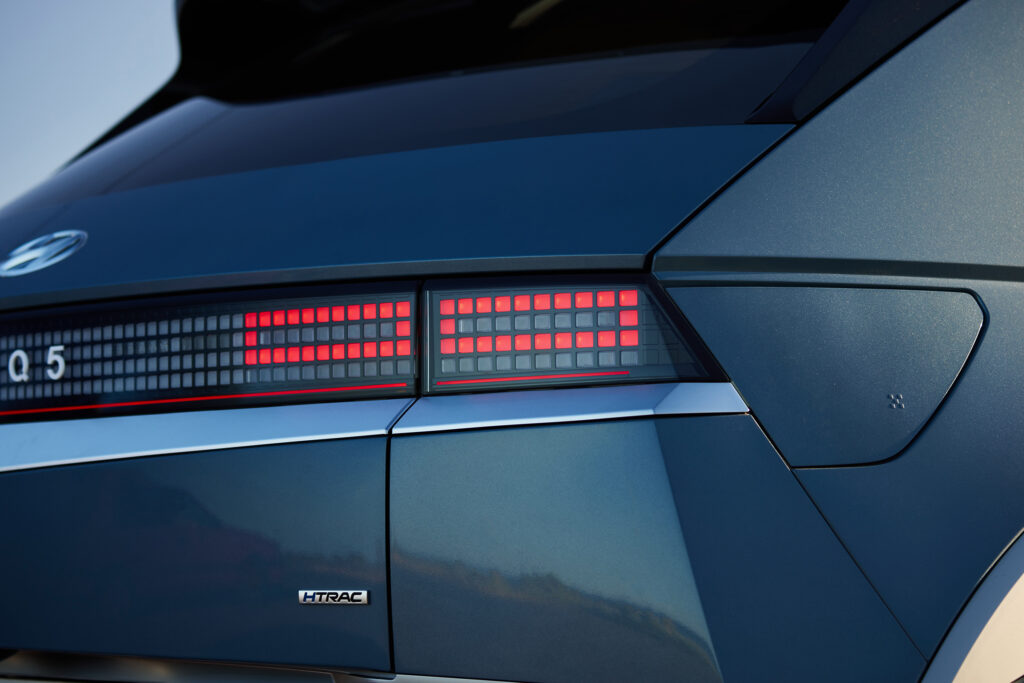
Value
Hyundai has taken a top-down approach with the Ioniq 5. Whereas the Tesla Model 3 Standard Range Plus and upcoming Polestar 2 kick off at $59,900 plus on-road costs, the Ioniq 5 starts at a hefty $71,900 for the single motor rear-drive model.
FULL DETAILS: Hyundai Ioniq 5 Australian pricing and specifications
The dual-motor AWD tested here adds $4000, so it’s somewhere north of $80K once dealer and on-road costs are added.
That makes the Ioniq 5 the most expensive Hyundai you can buy. It also means it misses out on the $3000 EV rebates being offered in NSW and Victoria. The Ioniq 5 RWD should get a circa-$2850 stamp duty break in NSW and the AWD model close to $3000. And while there are five standard colours, the Gravity Gold matte finish is another $1000 – and that breaks the limit for dodging NSW stamp duty, effectively making it an option costing about $4000 (but only on the AWD).
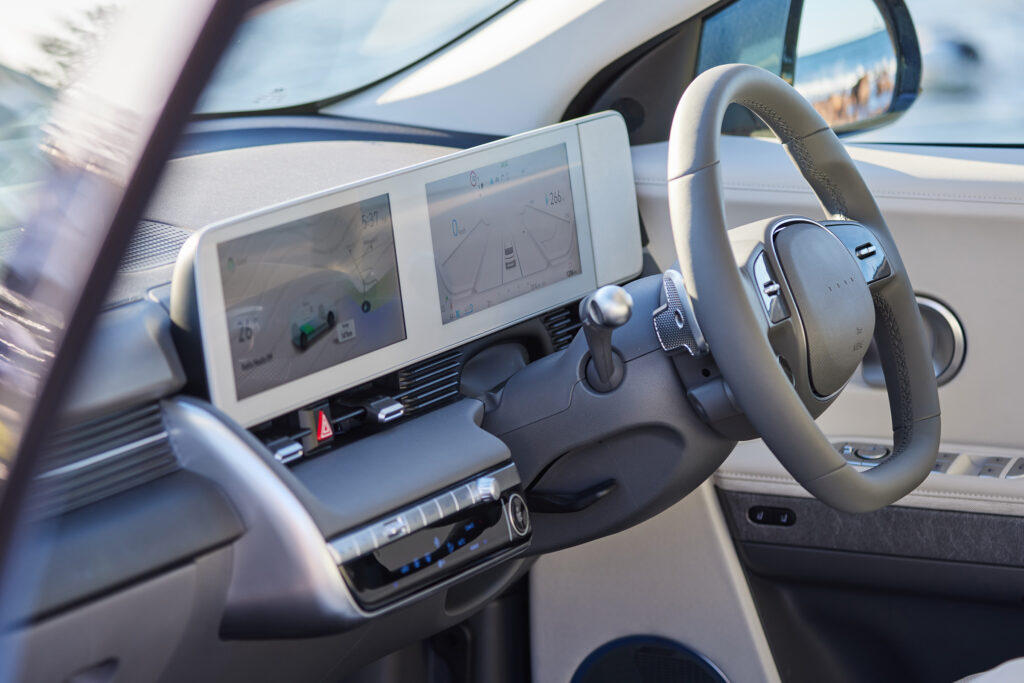
While the prices are big, so is the list of standard equipment, starting with eye-catching 20-inch alloy wheels. Panoramic sunroof, leather trim, Bose audio and dual 12.3-inch screens are all along for the ride, with Apple CarPlay and Android Auto integrated. There’s also smart key entry with recessed door handles, powered tailgate, adaptive cruise control, ambient lighting and wireless phone charging. Front seats are also heated and ventilated, while the rear seats and steering wheel heated.
Those wedded to their old school radio will like that it’s one of the few EVs with AM radio tuning.
It won’t be long until Hyundai has more affordable versions of the Ioniq 5. One option is the smaller 58kWh battery pack available overseas and there will also be models in future will less standard equipment and smaller alloy wheels.
Inside
If you’re questioning whether the Hyundai badge car stretch as far as $80K then you’ve got nothing to worry about, at least from the inside. The steering wheel is unusually devoid of a badge. Instead there’s a quartet of dots on a textured surface.
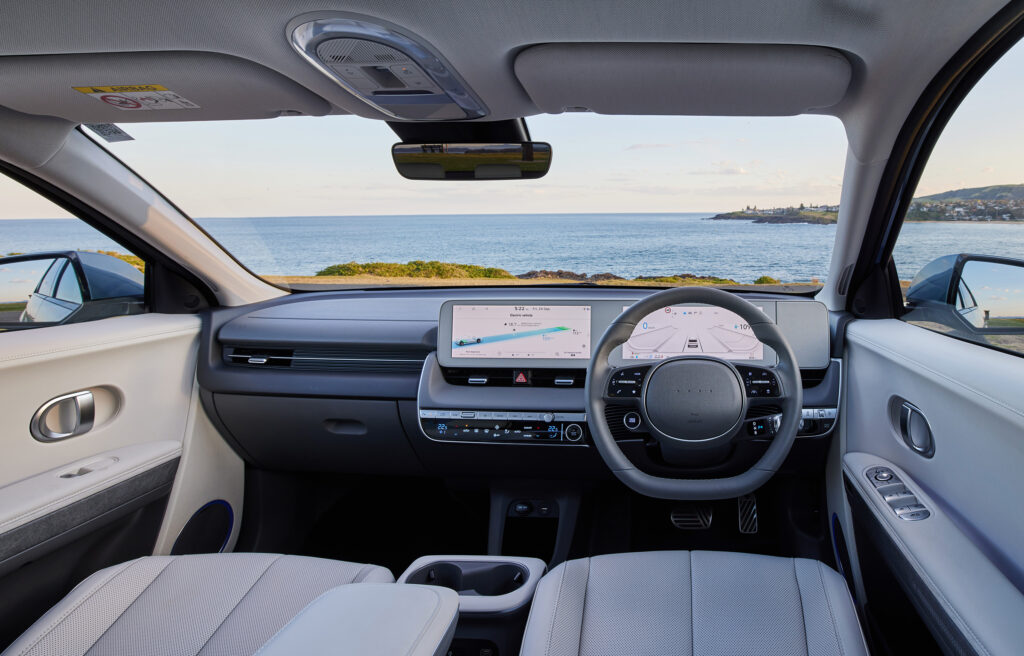
That surface is one of many finishes chosen for sustainability. Others include “paperette” on the doors, recycled plastic bottles in the carpet and other soft finishes made of sugar cane and wool.
Materials aside, it’s the sense of spaciousness in the cabin that sets the scene in the Ioniq 5.
On first glance it may look like a regular hatchback but the Ioniq 5 is much more. It’s slightly longer and wider than the company’s Tucson SUV.
And because it started from the ground up as an EV it means interior space has been maximised, something evident as soon as you peer inside.
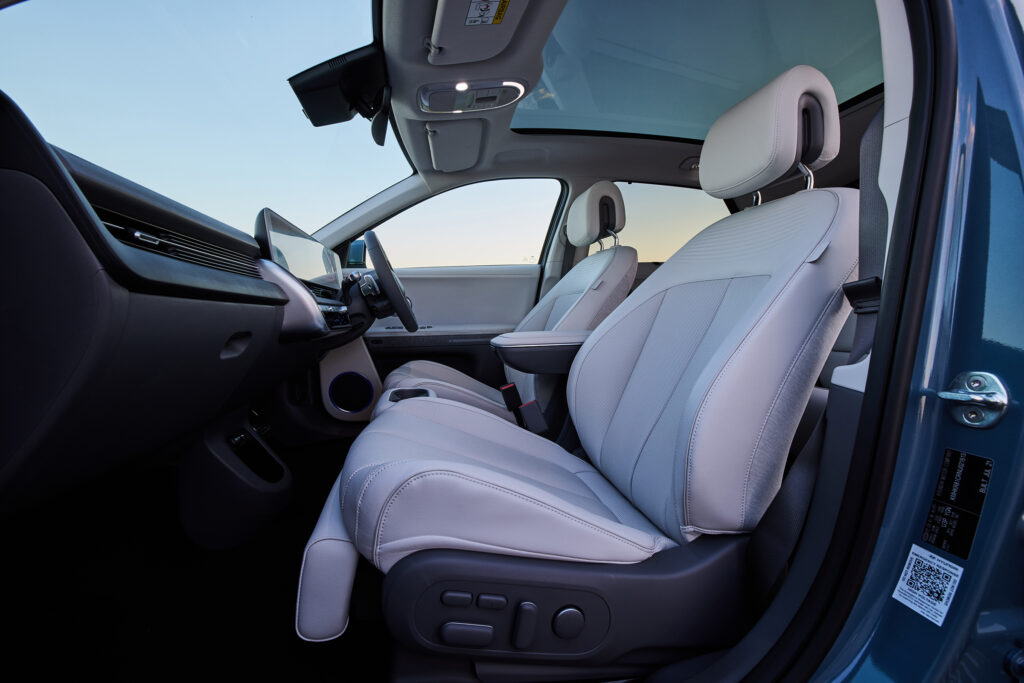
Key to the Ioniq 5’s cavernous back seats is its long wheelbase. There’s a full 3000mm between front and rear wheels, which is more than the latest Toyota LandCruiser 300-Series (2850mm). A flat floor also makes for great foot room.
Only six-foot-plussers will find their heads grazing the roof in the rear, the high-ish back seat base a result of the batteries beneath the flat floor.
There’s plenty of width – golf clubs easily fit between the wheel arches in the boot – and an airy feel, one helped by the glass roof (it has a cover for hot days).
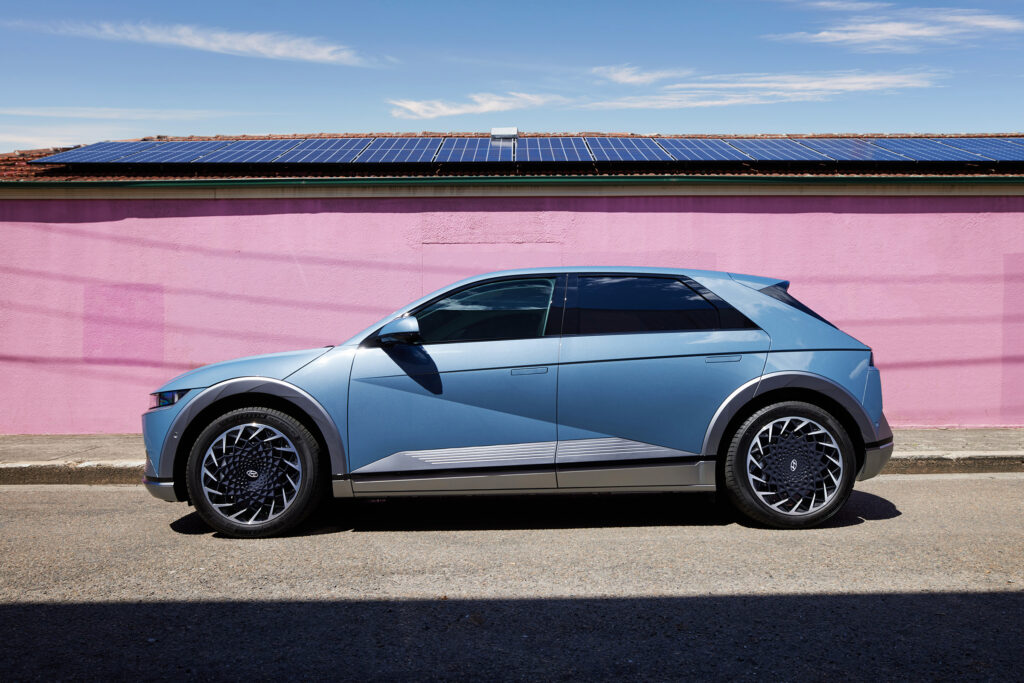
Two 12.3-inch digital screens dominate the dash. The instrument cluster is very white, although you can dull it down and take the sharpness off the whiteness.
Like the rest of the car there’s a modern look to the layout, although the steering wheel partially blocks some of the elements.
The centre touchscreen is easy to operate with logical menus, although it’s a bit of a reach from the driver’s seat to the main menu button in the top-left corner.
Touch buttons on the steering wheel and below the touchscreen work well, although we found ourselves occasionally swiping the temperature up a degree or two when fumbling for the small volume dial.
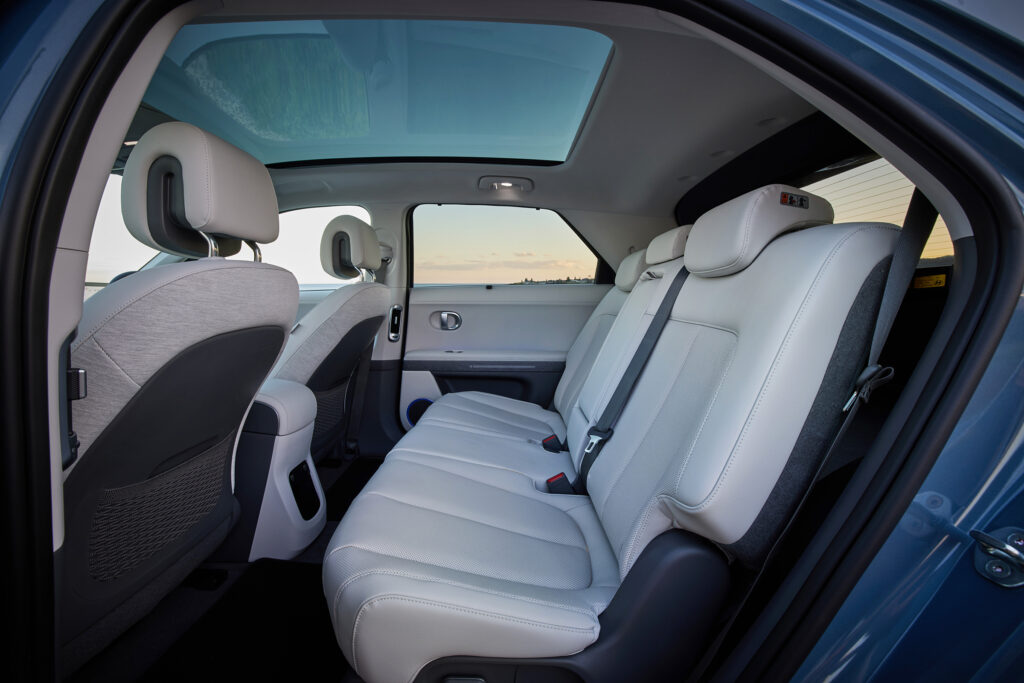
Like the occupant space, the Ioniq 5 is generously appointed with storage hidey-holes. The sliding centre console is the highlight, swallowing plenty and adjusting to your tastes. It seems most logical to slide it back unless you’re using the middle seat in the rear, at which point it makes sense to give that person more legroom.
The draw-like glovebox is also unusual.
We had a few noises in our car over bumps and they appeared to be from the rear seatbelt buckles banging against the plastic of the roof pillar. We couldn’t find any way to stop that happening; even when you laid them over the seat they’d eventually work their way to the point where they were noisy over bumps.
The luggage compartment is wide and long but the floor is shallow, plus there’s no spare tyre. But there’s still 527 litres of storage.
The rear-drive model gets another 57L under the bonnet while our all-wheel drive gets a 24L compartment. It looks smaller and we could only imagine people using it for valuables or things they don’t need to access often.
Performance and efficiency
The Ioniq 5 can be had with a single motor driving the rear wheels or two motors for all-wheel drive.
It’s the all-wheel drive we’ve tested here.
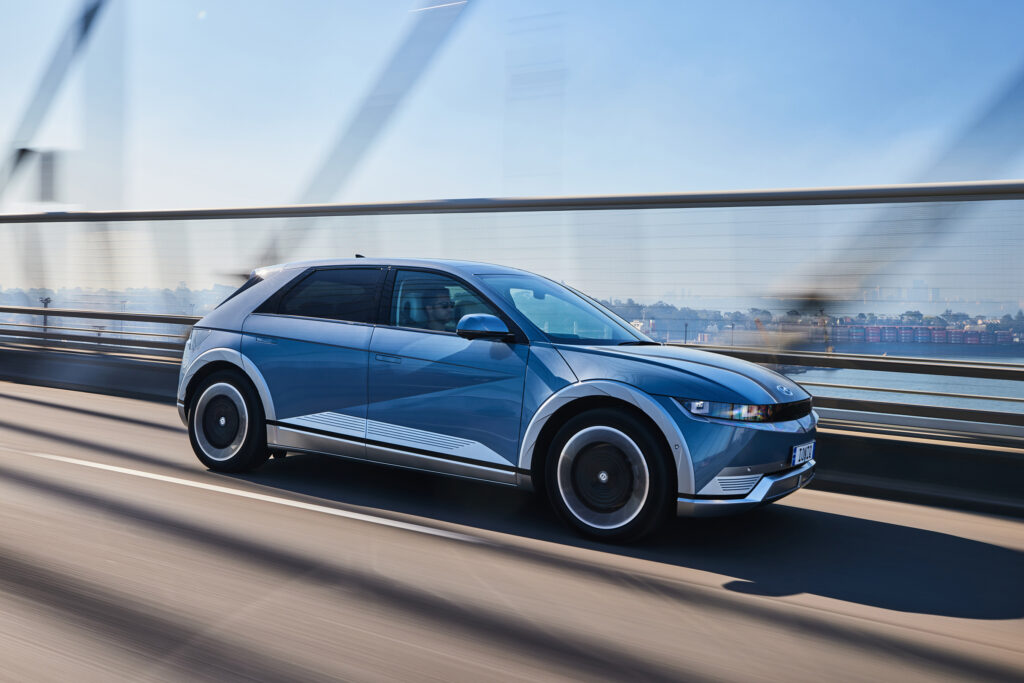
Getting started involves twisting a stalk below the indicator stalk to choose between forward and reverse (pushing the button on the end of the stalk engages Park).
There’s more grunt going to the back wheels – 155kW/350Nm – compared to those up front (70kW/255Nm).
And with a combined 225kW and 605Nm it’s lacking nothing for spark. Floor the throttle and there’s a lovely surge of energy. It’s suitably brisk and comes on quickly.
The Eco drive mode reduces peak power in the quest to preserve battery charge. It takes the edge of the briskness.
Normal mode unleashes the full 225kW, while Sport adds some trigger happiness to the throttle. We found Normal the best all-rounder.
Oh, and if you want to tow the Ioniq 5 is rated to take up to 1600kg.
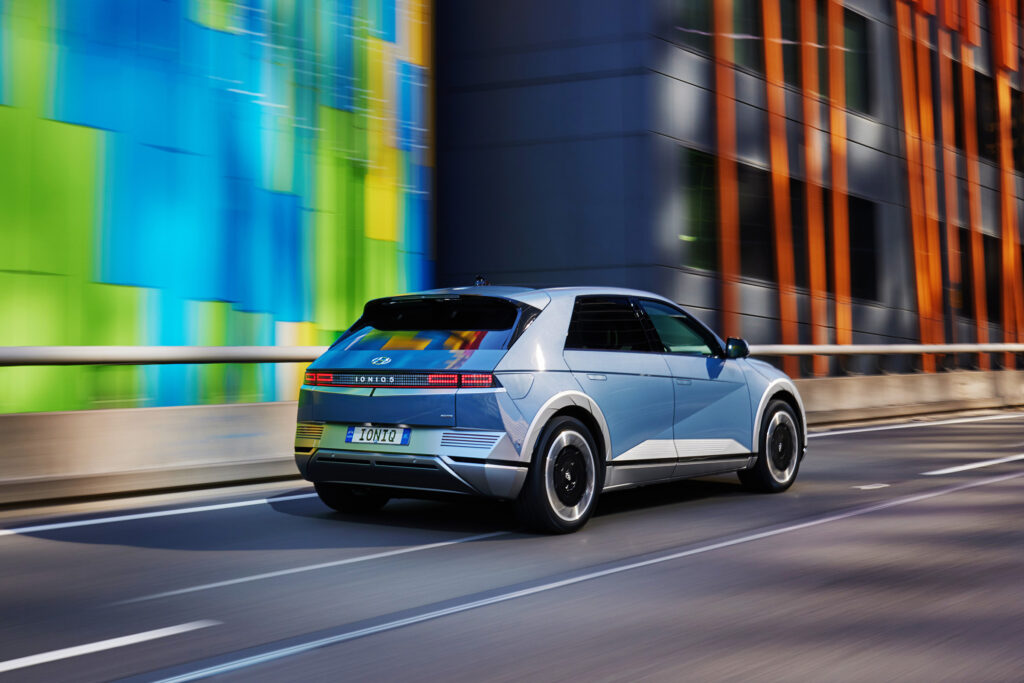
As for how far you’ll have all this fun driving it, the Ioniq 5 AWD is rated as having a 430km WLTP range. Energy usage is claimed at 19.0kWh per 100km.
We were nudging 17.5kWh/100km in the suburbs but electricity usage increased to just over 20kWh/100km once we got a bit more enthusiastic and touched higher speeds.
Charging
The Ioniq 5 is currently only available in Australia with the larger 72.6kWh battery pack. Hyundai has all but confirmed the smaller 58kWh battery pack will arrive later, possibly some time in 2022.
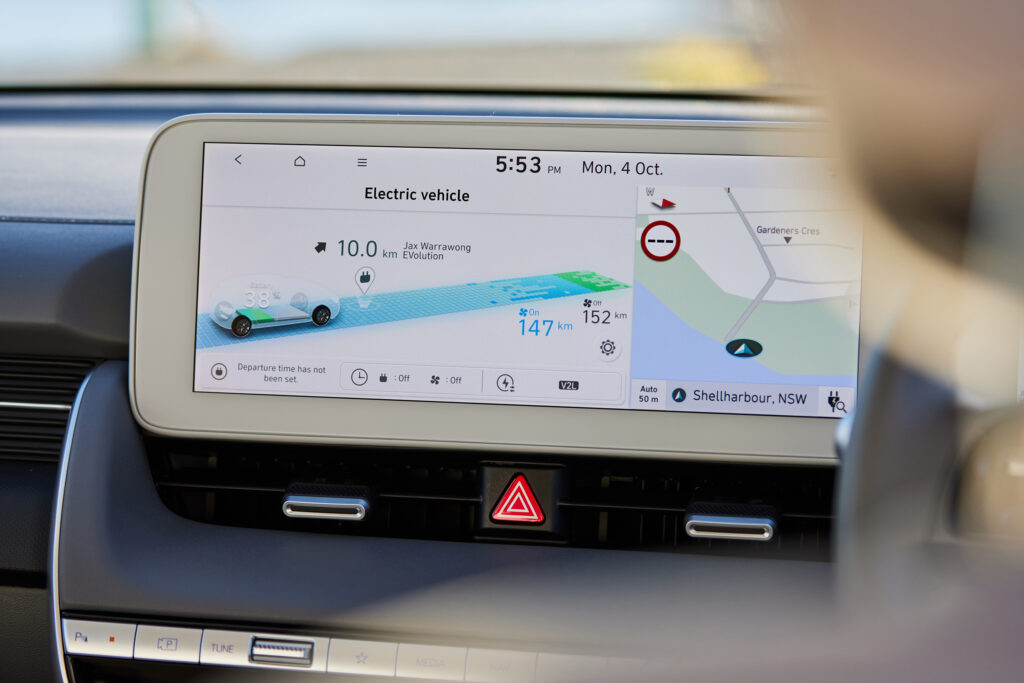
AC charging can be done at up to 10.5kW, which means a full charge in about seven hours.
If you’re using a home powerpoint it’s more like 34 hours for a full charge, or about 7.5 hours for 100km of range.
But it’s the DC charging that makes the Ioniq 5 stand out. Hyundai claims it’ll take up to 350kW but our testing suggests that’s optimistic and its peak charging power tops out at about 230kW.
We managed to perform a 10-80 percent charge in 17 minutes and 19 seconds, which is 3 seconds shy of Hyundai’s estimate. Not bad, and by our calculations that makes it the fastest charging EV in the country.
READ MORE: EV charging race: Hyundai v Porsche v Audi
The Ioniq 5 also has a vehicle-to-load function. We’ve got more on that below…
Ride and handling
There’s 2.1 tonnes of Ioniq 5 to contain, which makes it a nuggety crossover.
You’re never in any doubt there’s plenty of weight underneath, although in most situations it disguises those kilos nicely.
With batteries in the floor the centre of gravity is way down low. And impressive 20-inch Michelin tyres provide ample grip.
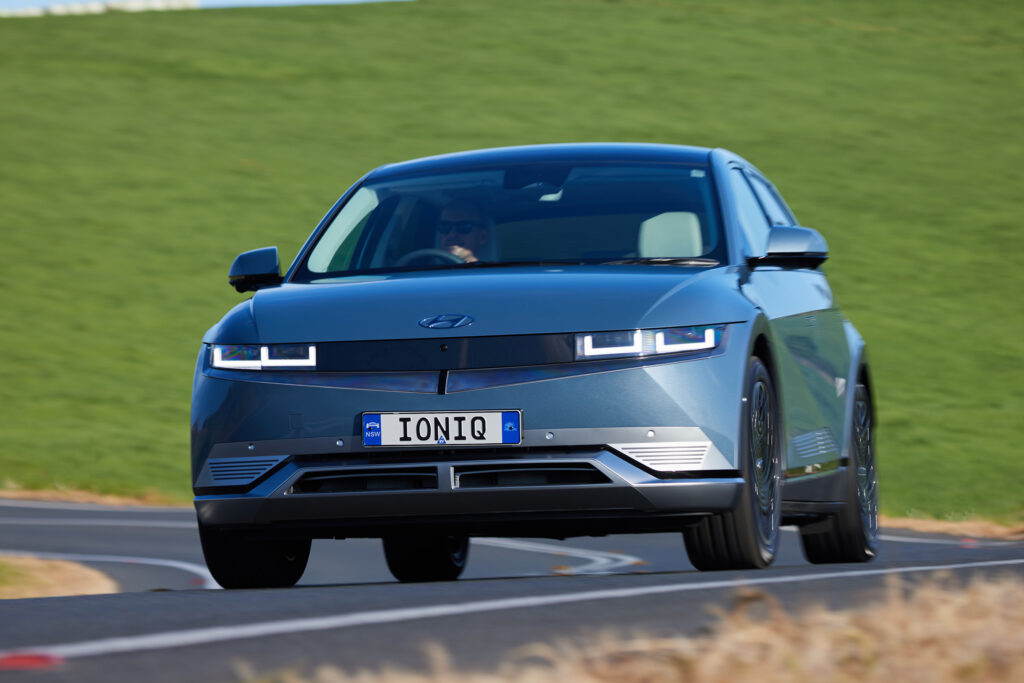
The tyres are relatively low profile – the wheels they’re wrapping are largely about the looks – and that takes the edge of the bump suppression when you hit sharp edges.
But there’s enough compliance for everyday comfort.
Dial up the pace and the Ioniq 5 responds faithfully, although it predictably lacks the finesse of something lighter.
But throw multiple big imperfections into the middle of the corner and you’re suddenly reminded of that 2.1 tonnes as the suspension works to contain things.
While it’s stable, competent and immensely capable, the Ioniq 5 reinforces the challenges of making so much mass agile.
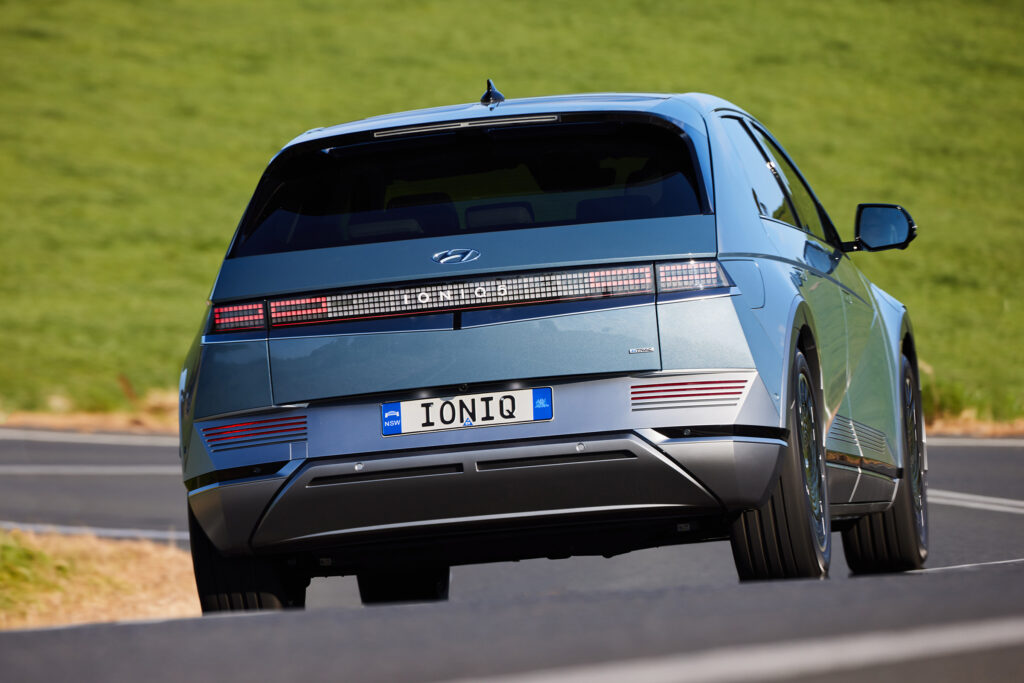
Approaching 100km/h there are hints of wind noise that are a rare blemish on an otherwise calm cabin. Refinement and noise levels are generally miles below those of most ICE cars.
Party tricks
The Ioniq 5 doesn’t yet have vehicle to grid functionality, but it does have vehicle to load.
A stubby Type 2 adapter plugs into the charging port and has a powerpoint allowing you to power anything up to 3.3kW (the powerpoint has a longer earth pin to allow for the full 15A at 230V).
It’s handy for powering everything from a camp site to power tools – or even keeping a remote control car topped up on batteries. You can even use it to charge another EV, although it’ll be a slow charge.
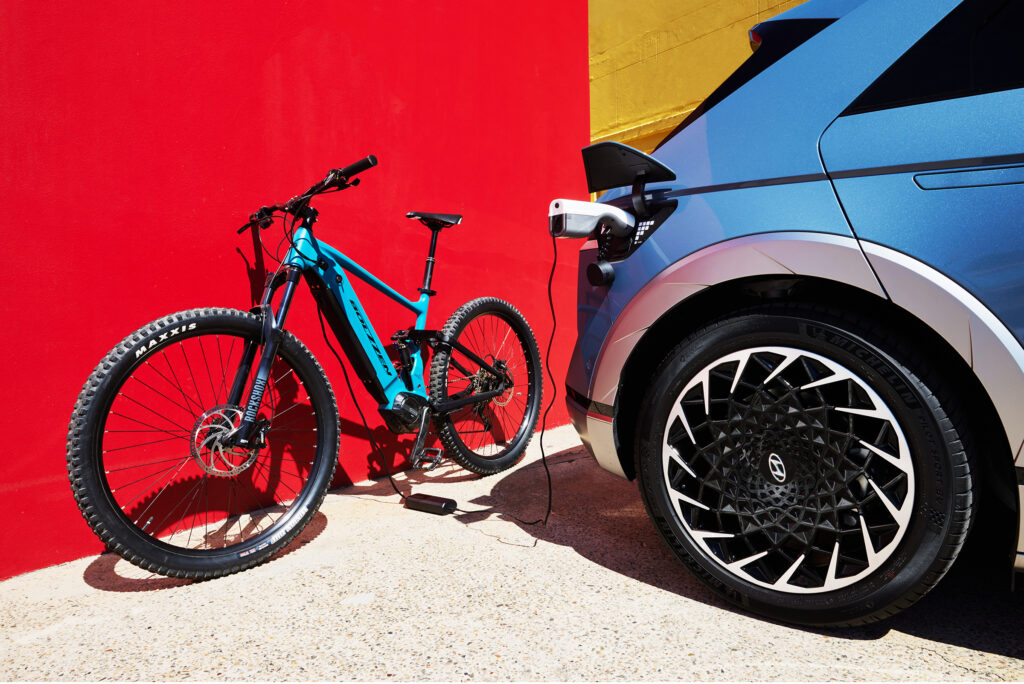
Another cool party trick is the remote parking. Two buttons on the remote keyfob allow you to drive the car forward and back with no one inside. It’s designed to get in and out of tight parking spots, but it’s arguably more useful as something to make kids smile.
Safety
As with the infotainment and luxury features, the Ioniq 5 is brimming with safety gear. There are seven airbags, including a centre airbag between the front occupants (it’s designed to reduce head clashes in a side impact).
There’s also auto braking in forward and reverse and the smarts to detect cars at intersections or when crossing in front of you. Rear cross traffic alert, blind spot warning and tyre pressure sensors are also part of the deal.
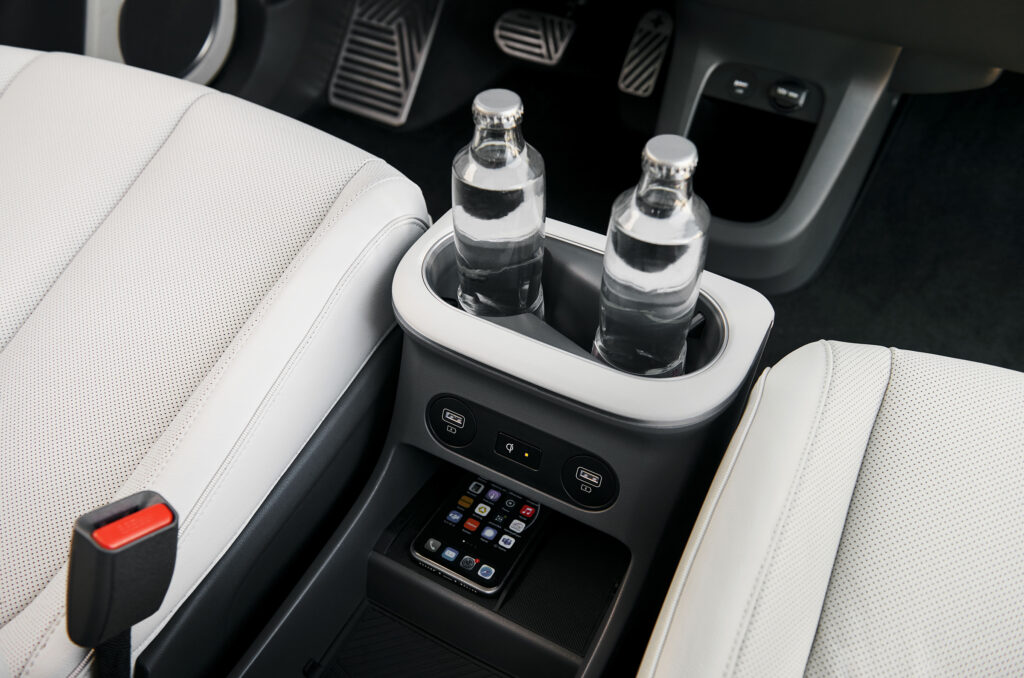
The lane keep assist system is less useful, occasionally beeping and steering when we didn’t want it. We kept turning it off.
Verdict
The Ioniq 5 is an impressive EV and one that provides a convincing alternative to the Tesla Model 3 that until has been the default pick for so many. It’s by far the most persuasive in the broad offering of electric vehicles in the Hyundai showroom. And it reinforces the benefits of starting from a clean sheet when placing batteries, electric motors and occupants.
While there’s no ignoring the price, Hyundai has also thrown plenty at the Ioniq 5 to justify it.
Whether that will be enough to tempt those who typically gravitate to luxury brands at this price point remains to be seen.
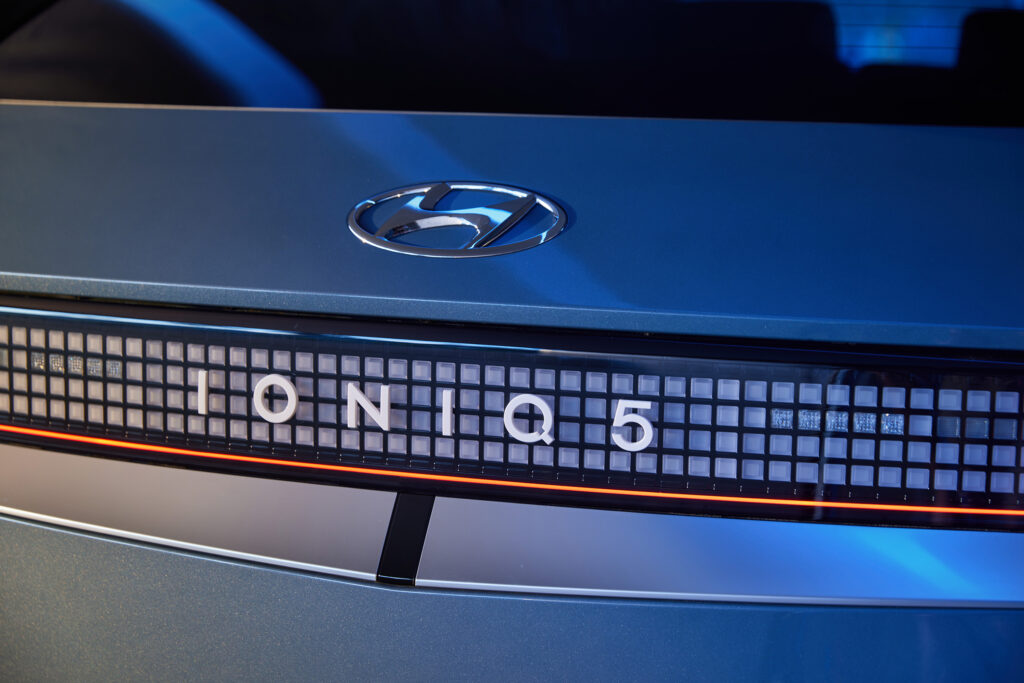
But the substance is there and the foundations are solid.
We suspect the more convincing Ioniq 5s will come in 2022 when Hyundai inevitably takes some of the fancy equipment out and allows the core car to spruik its EV goodness.
As it is, it’s an impressive, but exxy EV effort.
Hyundai Ioniq 5 AWD
Price: $75,900 plus on-road costs
Basics: EV, 5 seats, 5 doors, crossover SUV, AWD
Range: 430km (WLTP)
Battery capacity: 72.6kWh
Battery warranty: 8 years/160,000km
Energy consumption: 19.0kWh/100km
Motors: 1 front 70kW/255Nm and 1 rear 155kW/350Nm, total output 225kW/605Nm
AC charging: 10.5kW, Type 2 plug
DC charging: 230kW, CCS combo plug
0-100km/h: 5.2 seconds

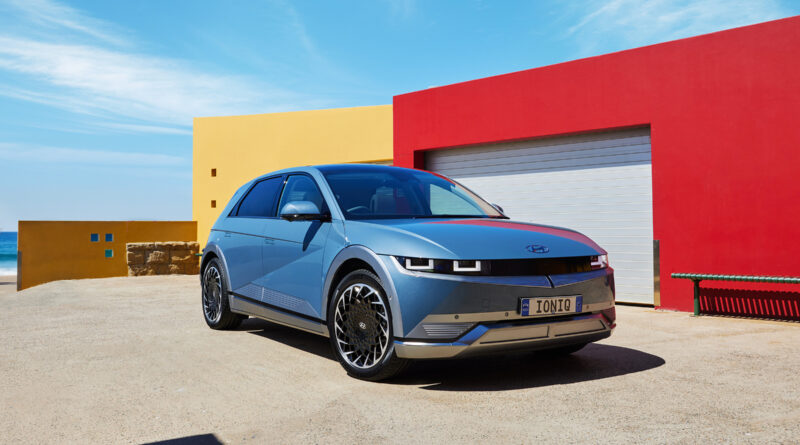

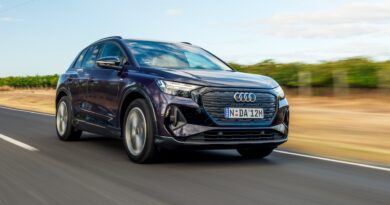

I’d love to test drive one, I’d even order on with a mid-2022 delivery but Hyundai are not interested. There is a test car at my local dealer but they are not allowed to let me drive it. Hyundai won’t return my calls….very frustrating